| |
Nengajou are traditional New Year's postcards in Japan. They are sent to arrive on or after New Year's Day. It's even considered rather awkward if they arrive early! Late is okay, but it's really best for them to arrive on January 1. For this reason, the post office has a special system set up. When correctly marked as a nengajou, cards are set aside for special handling. Then on New Year's Day, they mobilize thousands of extra employees to deliver all the cards on the same morning. There's a long tradition of handmade cards. In the month before New Year's you can buy blank postcards, which you can decorate by hand with stickers and rubber stamps. You can also use a stencil machine, print them from your computer, or simply draw them by hand. Recently, there are also services in camera shops and on the internet to order your own custom designs. People without such creative inclinations can buy them with pre-printed designs. This year, instead of Christmas cards, we decided to send out nengajou. We used stickers and rubber stamps to decorate ours. A nice feature of making them by hand is that it's easy to make each one unique. 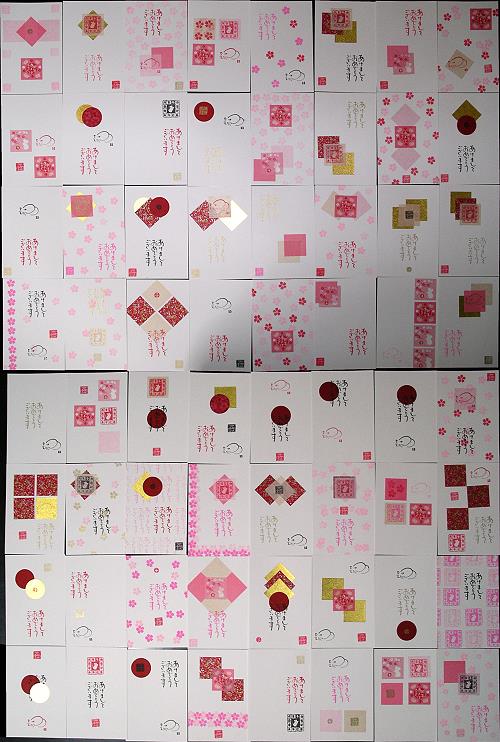 And here's a closeup of one card. 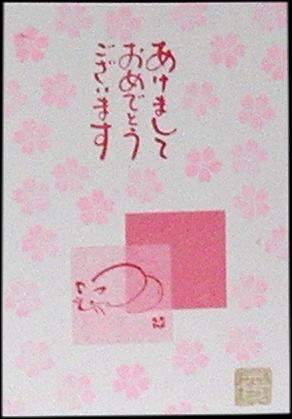 2008 is the "Year of the Rat" on the Asian calendar. There doesn't seem to really be much distinction between mice and rats here (the Japanese word for mouse is actually "small rat"), so it's really treated as the Year of the Mouse. That's why there are all the cute little mice on our nengajou.
[ 4 comments ] permalink
Our first Christmas in Japan is over, save for the sort of "second Christmas" we get by virtue of having family in the U.S. We can call people pretty much any time between the morning of the 25th and the morning of the 26th, and it's Christmas for someone. It's really rather nice. Christmas isn't really a big deal in Japan. It's not a national holiday, so we got mail delivery today, and most people worked. Also, turkey is essentially nonexistent here, so many families celebrate with KFC. We couldn't make ourselves get KFC, opting for an all-American dinner of steak, mashed potatoes, and grilled asparagus. Matthew hasn't had mashed potatoes in at least nine months, so he was pretty excited about them. We did, however, follow tradition and get a Christmas cake. 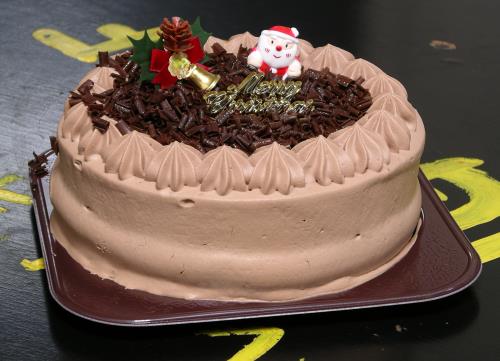 As we've mentioned before, the Japanese Christmas cake is traditionally sponge cake with whipped cream and strawberries. We ordered one with chocolate whipped cream, which turned out to have bits of pineapple and peaches in the middle. It came with a box of strawberries for garnish.  It was pretty tasty, too. Merry Christmas, everyone!
Technology at work on the mailbox outside JR Mizusawa Station: 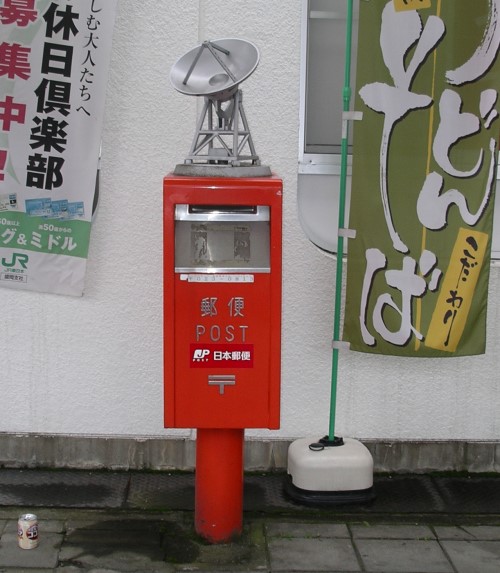 It's actually a model of a radio telescope, presumably to recognize Mizusawa's status as host to one of the radio telescopes in the VERA network. I prefer to think that Japan Post Service simply beams mail out of the box to wherever it needs to go.
 Chusonji is a famous temple in Hiraizumi, about 40 minutes south of Kitakami by car or train. It is most famous for the large main hall and the opulent Konjikido (golden hall) covered in gold leaf and mother-of-pearl inlay. Less well known are the dozens of smaller halls and shrines dotting the grounds. In many places, any horizontal surface has pebbles piled on it. The piling of stones seems to be a sort of prayer enhancement: you make your prayer, then stack stones up towards the heavens. The higher you can stack them, the better.
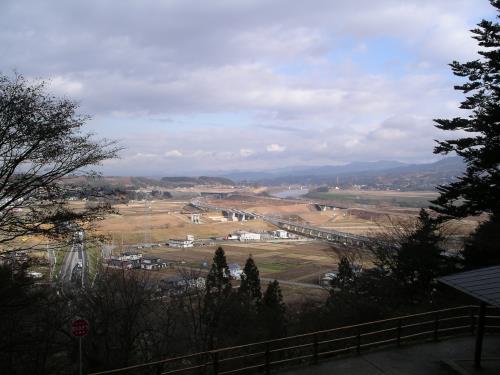 Hiraizumi Hiraizumi is a major historical attraction of Iwate, and the site of Chusonji, the first temple designated as a National Treasure of Japan. The temple is built on a forested hill, where occasional breaks in the trees offer views like this.
[ 2 comments ] permalink
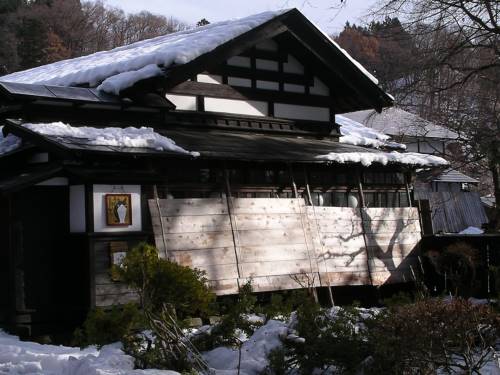 The border between Iwate and Akita runs along the central mountain ridge of Japan, with Iwate on the east and Akita on the west. Cold air from Siberia picks up moisture crossing the Sea of Japan, then socks Akita with deep "lake effect" snows. Iwate is protected by the mountain ridge, so it gets far less snow even though it's right next door. One indicator of this difference is that on the Akita side, many houses' first floor windows and walls are protected by additional boards in winter. They are set against the houses to keep the snow from pushing directly on the walls and damaging them.
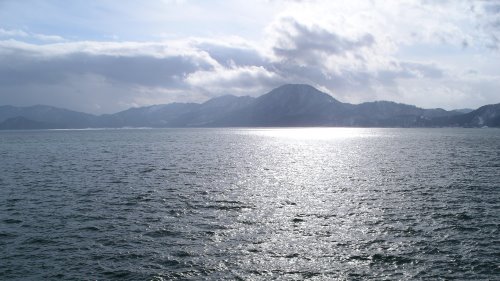 Lake Tazawa, the deepest lake in Japan, is in Akita Prefecture and not too far from the Iwate border. We remember it well from our 2006 visit, and went to see it again last week. It's definitely the off-season — there was hardly anyone else there, and many of the shops and kiosks were closed — but the cold winter air and the snow made for a beautiful sight.
To: Matthew and Stefanie From: Moki and Aki Re: ZabutonsBecause we are Japanese dogs, we believe we should get to use the zabutons. Aki wants the red one. She also wants the kotatsu. 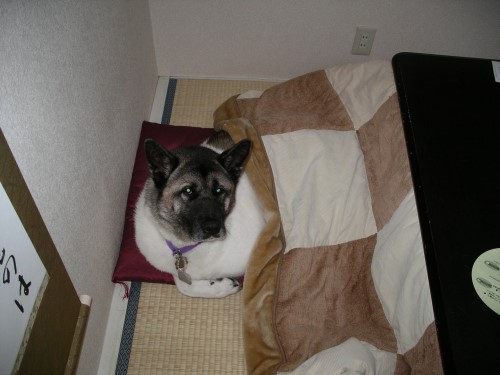 Also, Moki would prefer something a little larger. 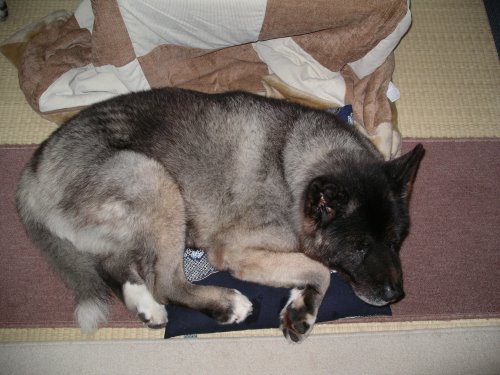 Thank you.
We finally had our big kerosene heater installed last week, much to Christina's (and our) relief. It's kind of a shame that a Tohoku winter vacation based out of Pension Let's Sharing will no longer have a full day of seeing your breath inside as an attraction. Then again, it's nice to be able to feel my hands during the day. Here's our new best friend:  You can't read the placard on the front, but it is, appropriately, an "Excellent" heater.
The World is Black and White
A color photograph of a black and white world. 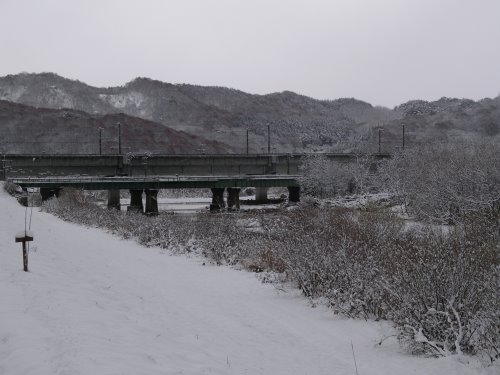
Back Next
|
|















 Calendar
Calendar




